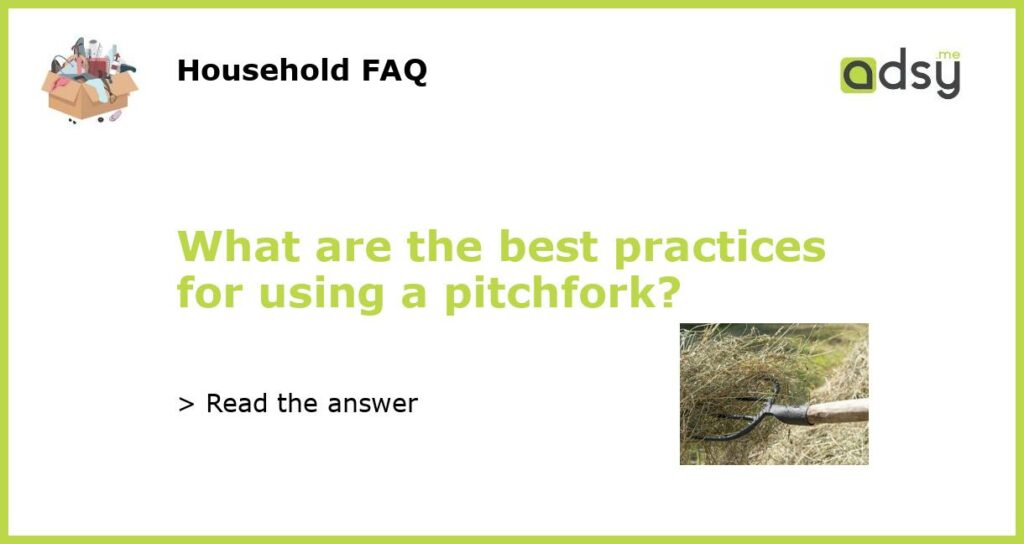Understanding Pitchfork Basics: Tips for Beginners
Before we dive into the best practices for using a pitchfork, let’s start with the basics. A pitchfork is a long-handled farm tool with two or three tines (prongs) that are typically used for lifting loose materials like hay, straw, or leaves.
As a beginner, it’s important to understand how to properly grip and hold a pitchfork. The top of the handle should be at chest height, with your hands spaced apart for balance. The pitchfork should be held with both hands, with your dominant hand toward the bottom of the handle for better control.
Using a Pitchfork for Hay Bales: Tips for Efficiency
One of the most common uses for a pitchfork is lifting and moving hay bales. To do this efficiently, start by inserting the tines of the pitchfork into the side of the bale, about 1/3 of the way down. Use your dominant hand to stabilize the handle, and your other hand to push the tines into the bale. Once the tines are securely in place, lift the bale by leaning the pitchfork handle back toward you and using your legs to lift.
It’s important to keep your back straight and avoid twisting while lifting to prevent injury. Always pay attention to the weight of the bale and remember to lift with your legs, not your back.
Using a Pitchfork in the Garden: Tips for Precision
If you’re using a pitchfork in the garden, precision is key. Start by loosening the soil around the plants you want to move or harvest. Insert the tines of the pitchfork into the loosened soil and gently lift the plant out of the ground.
For more delicate plants, it may be helpful to use a fork with smaller tines, known as a “border fork,” to avoid damaging the roots. Once you’ve lifted the plant, gently shake off excess soil and transplant it to a new location or harvest the fruits or vegetables.
Pitchfork Maintenance: Tips for Longevity
Like any tool, a pitchfork requires proper maintenance to ensure longevity. After each use, wipe down the tines with a damp cloth to remove dirt and debris. If there is excessive rust or buildup, use a wire brush to scrub the tines and then oil them to prevent rust.
When storing your pitchfork, it’s important to avoid leaning it against a wall or leaving it lying on the ground. This can cause the tines to warp or bend out of shape. Instead, hang your pitchfork on a pegboard or wall mount to keep it in good condition.
Pitchforks are Versatile Tools That Require Proper Technique
Whether you’re a farmer, gardener, or just need a tool for lifting and moving materials around your property, a pitchfork can be an incredibly versatile tool. By understanding the basics of grip and technique, using a pitchfork for hay bales or in the garden can be done with efficiency and precision. And with proper maintenance, your pitchfork can last for years to come.






